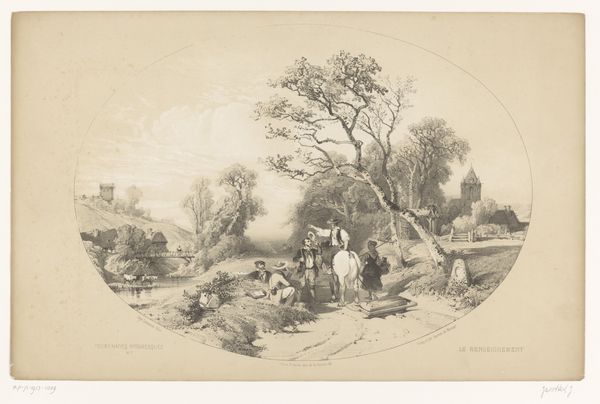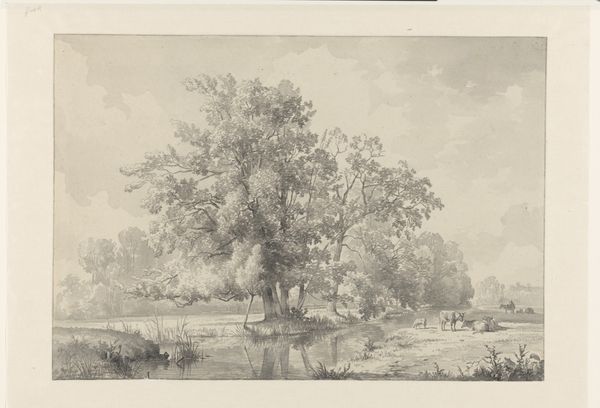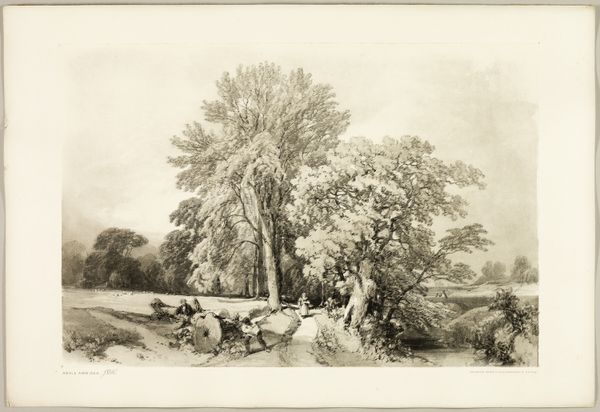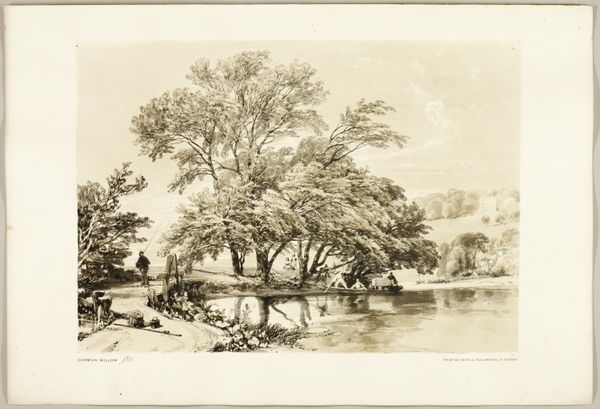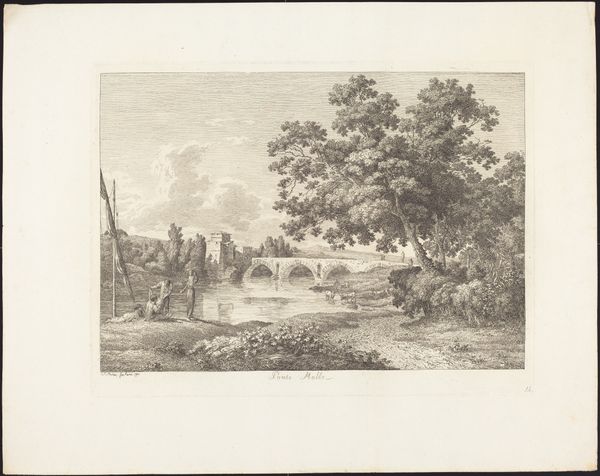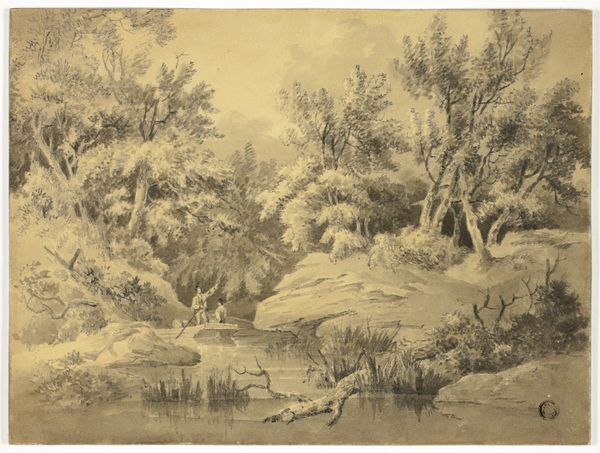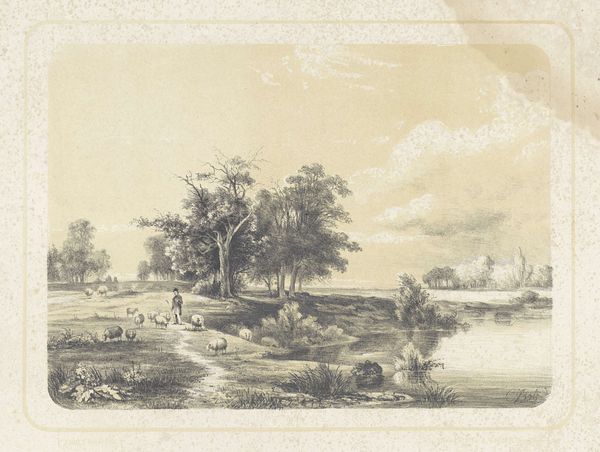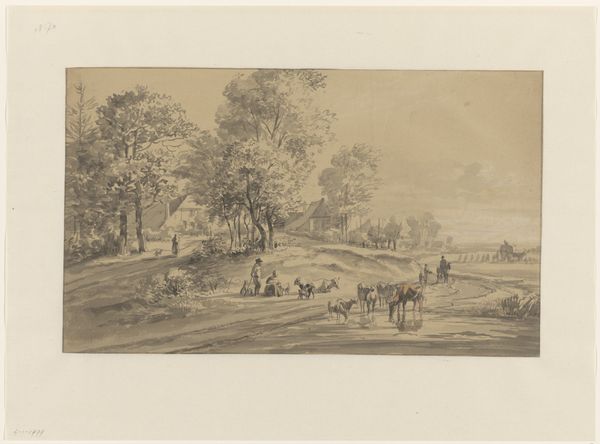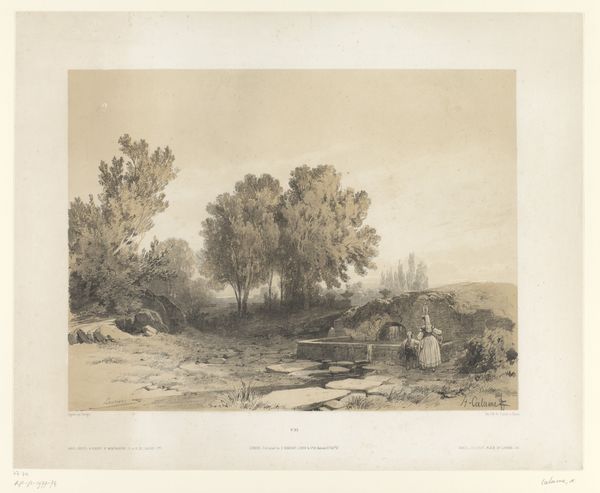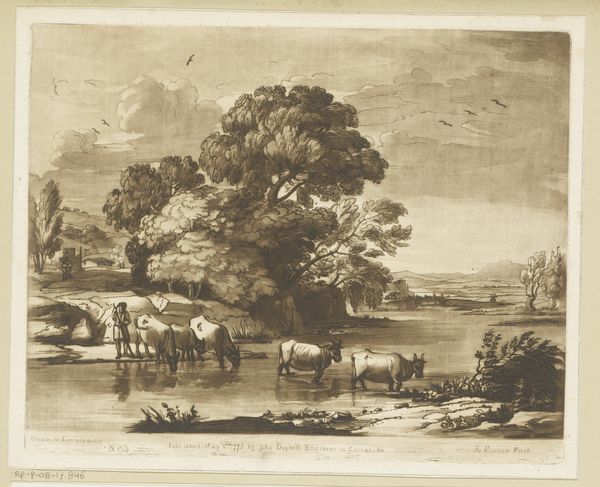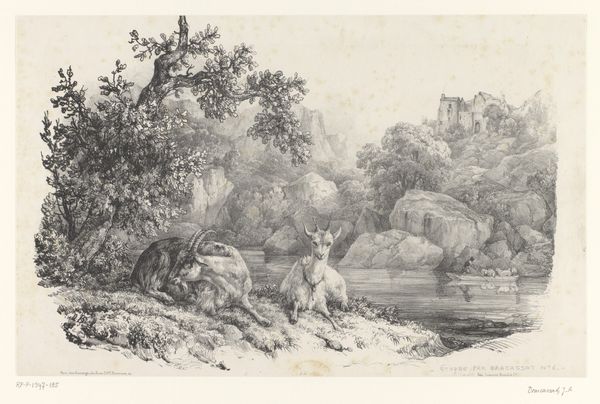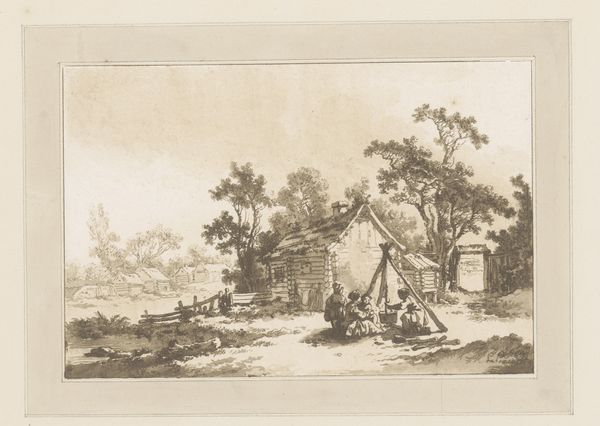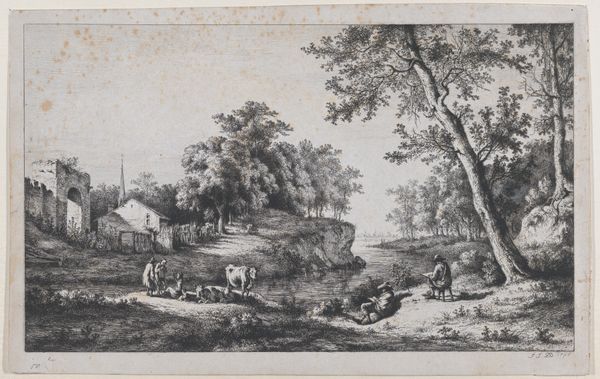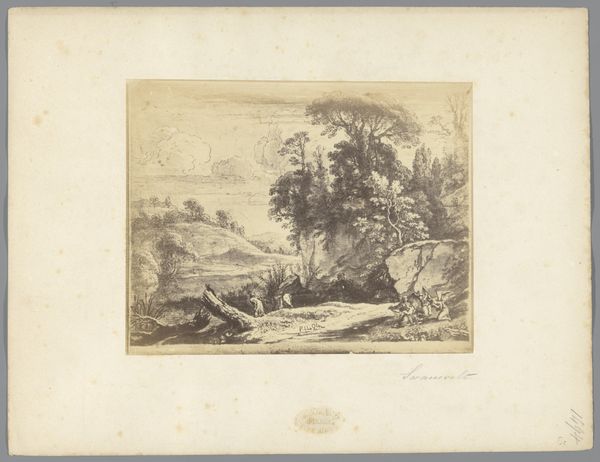
drawing, pencil, graphite
#
drawing
#
pencil sketch
#
landscape
#
romanticism
#
pen-ink sketch
#
pencil
#
graphite
#
watercolour illustration
#
genre-painting
#
watercolor
Dimensions: height 332 mm, width 518 mm
Copyright: Rijks Museum: Open Domain
Curator: What immediately strikes me is the luminosity. It feels delicate, almost dreamlike, in its composition. Editor: Indeed. We're looking at "Vissers aan een meer," or "Fishermen at a Lake," a graphite and pencil drawing created around 1850 by Louis-Julien Jacottet. It resides here at the Rijksmuseum. For me, this piece invites reflection on the roles and representations of women in leisure activities during this period. Look how they are both central figures and carefully positioned within this idyllic setting. Curator: The arrangement within the oval frame is expertly handled, guiding the eye effortlessly from the group on the left to the tranquil water on the right. It's almost like a vignette lifted from a larger, perhaps more chaotic, reality. The composition also speaks to a sense of balance and harmony in nature and society. Editor: Yet, what is harmony for some may signal oppression for others. This idealized vision glosses over the labor and the social stratifications inherent in 19th-century society. The "leisure" of some depends on the invisible labor of others. Also, while ostensibly a scene of "fishermen", we need to address how the inclusion of women reinforces societal expectations that positioned them primarily in the domestic sphere, even in scenes of outdoor recreation. Their very presence normalizes and aestheticizes social structures that privilege men. Curator: That's an interesting point, yet it also possesses a timeless quality—the play of light on water, the serene atmosphere, all rendered with great precision. It’s more than just social commentary; the texture achieved through graphite and pencil offers a remarkable depth and tactility. Editor: While appreciating the technical skill, I always question who is invited into these "timeless" moments and who is excluded? Which realities are legitimized through representation? Curator: I concede it's a constructed reality but art often transforms lived reality to comment on lived experience. Editor: Precisely. Let us encourage viewers to unpack the nuanced, constructed elements in the landscape around them, both real and imagined, especially in relationship to social conventions that privilege certain people, roles and places.
Comments
No comments
Be the first to comment and join the conversation on the ultimate creative platform.
